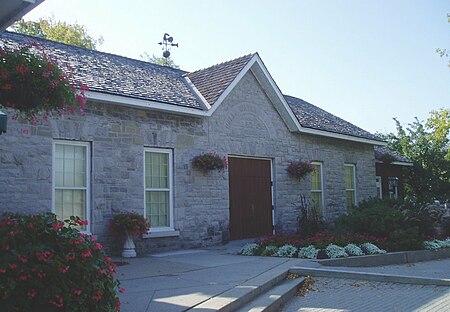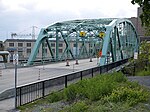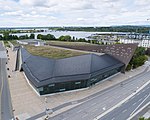Théâtre de l'Île

The Théâtre de l'Île (Theatre of the Island) is a small municipally run theatre in Gatineau, Quebec, Canada. It is located on a small island at the southern end of the Ruisseau de la Brasserie, a small river running just to the west of Montcalm Street in the former city of Hull. The building was originally constructed in 1886 as the Hull Water Works, at a time when the site was at the heart of a largely industrial area. In the subsequent decades the building served a number of different purposes. In 1974, it suffered a devastating fire. The city of Hull and the National Capital Commission joined together to rebuild the structure as a theatre. It opened in 1976, and was the first municipally run theatre in Quebec. The theatre seats up to 119. It puts on a number of different shows per year, with some 25,000 spectators per annum.
Excerpt from the Wikipedia article Théâtre de l'Île (License: CC BY-SA 3.0, Authors, Images).Théâtre de l'Île
Sentier du Ruisseau-de-la-Brasserie Pathway, Gatineau Hull
Geographical coordinates (GPS) Address External links Nearby Places Show on map
Geographical coordinates (GPS)
| Latitude | Longitude |
|---|---|
| N 45.425501 ° | E -75.724656 ° |
Address
Théâtre de l'Île
Sentier du Ruisseau-de-la-Brasserie Pathway
J8X 2H3 Gatineau, Hull
Quebec, Canada
Open on Google Maps






